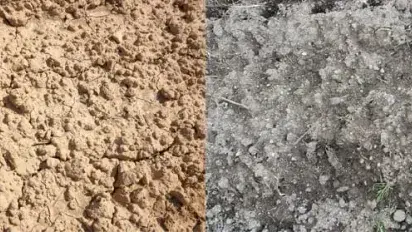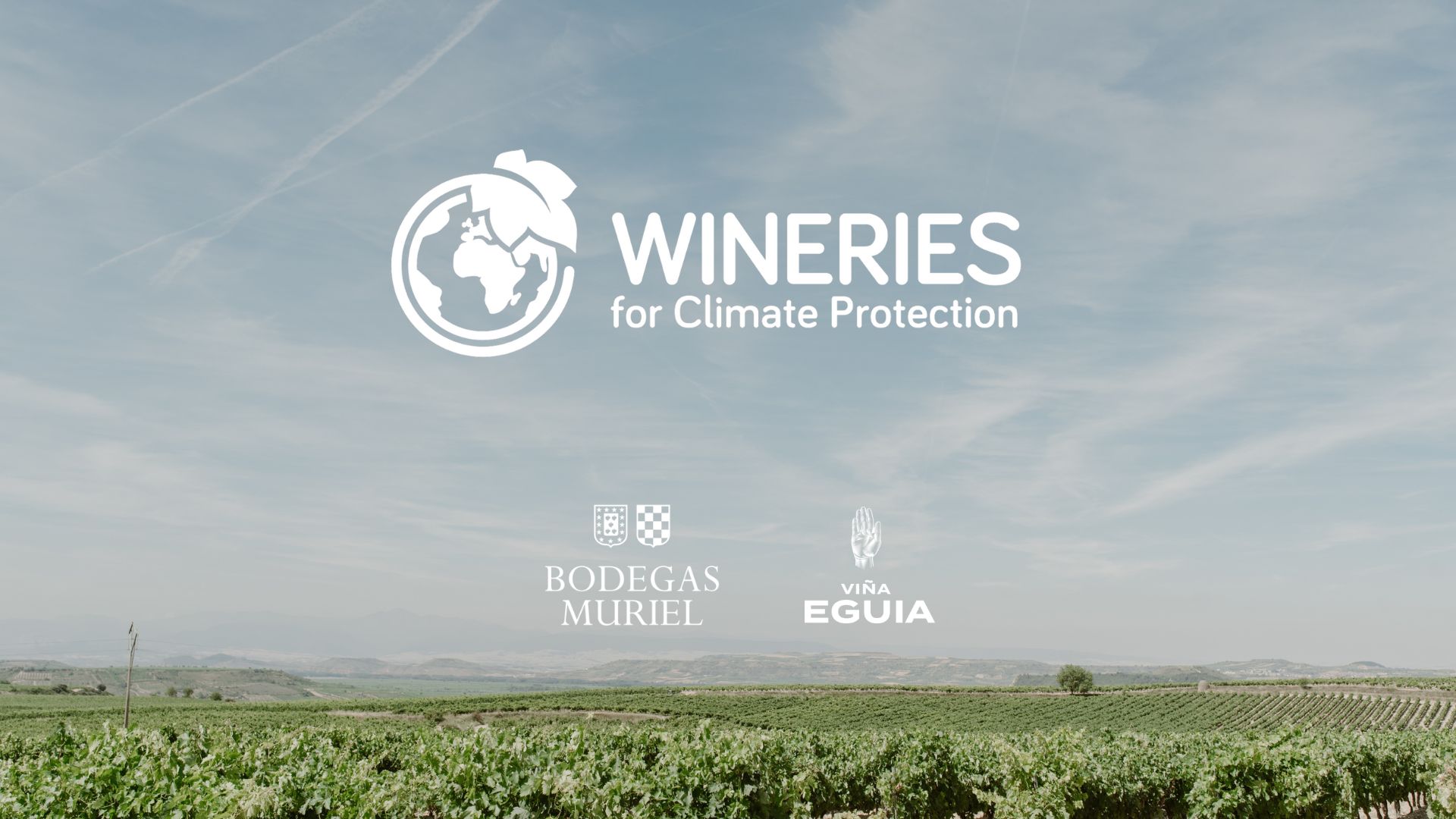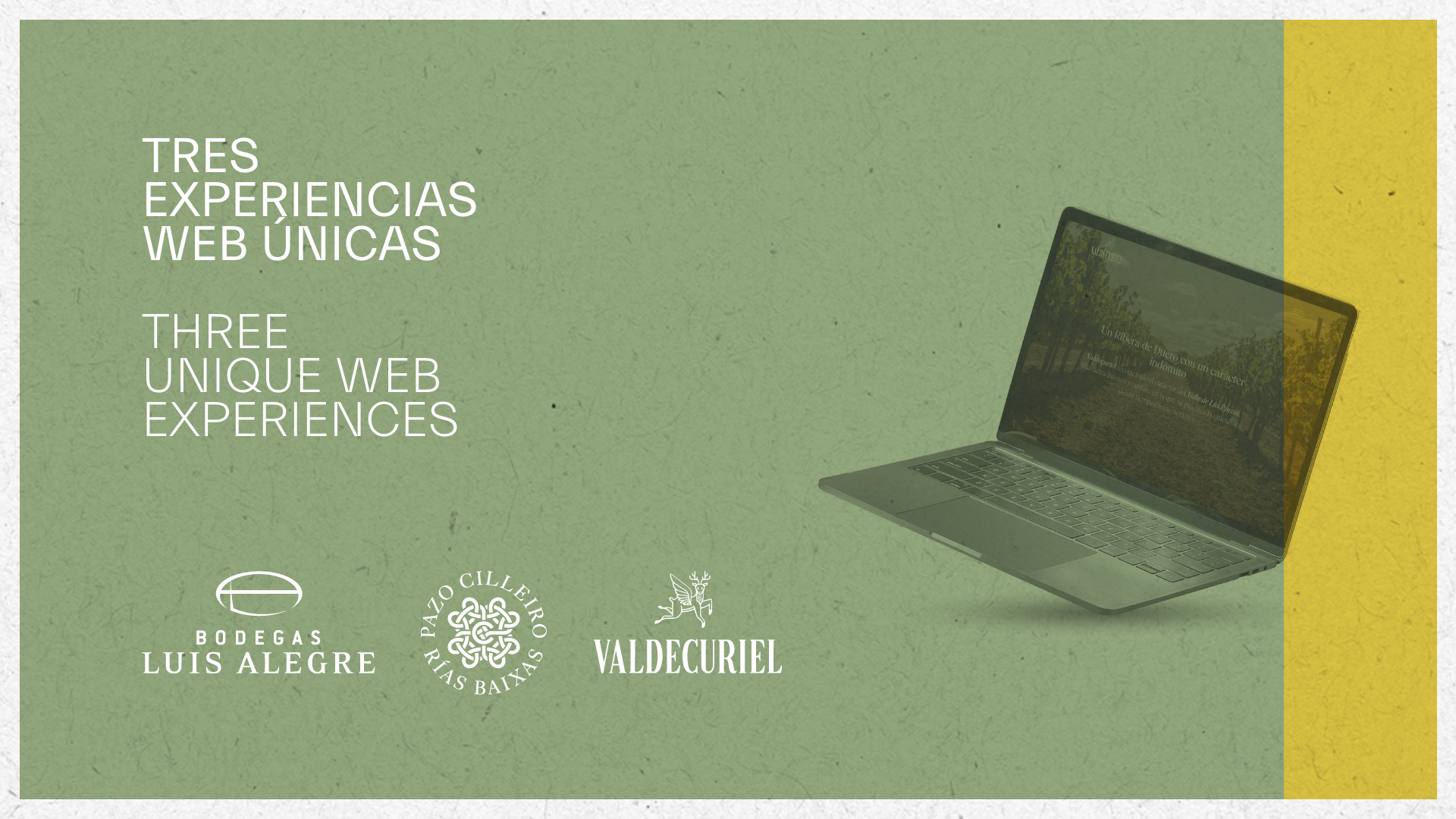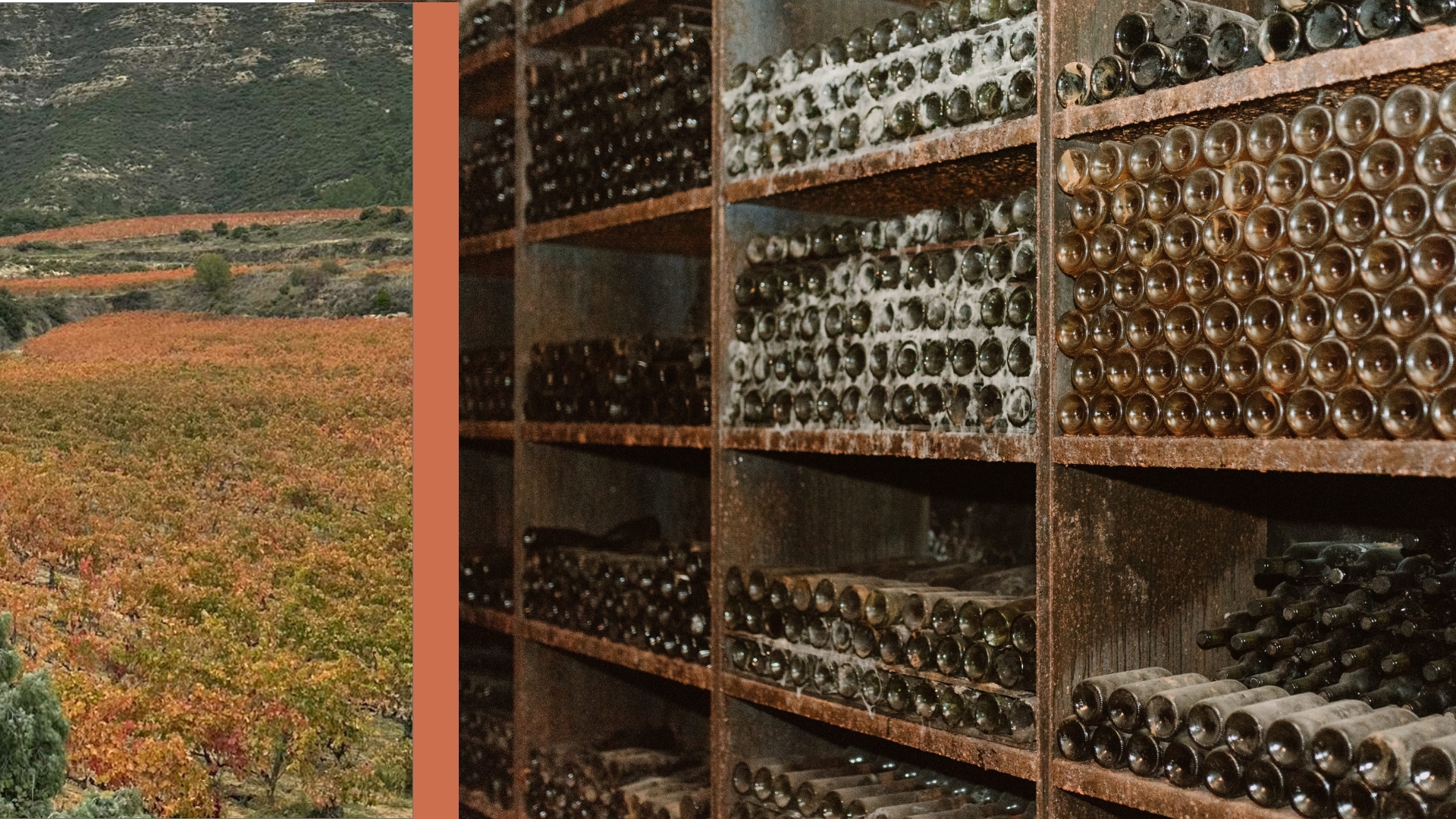Perhaps the reader has guessed that we are talking about the peninsular geology. More specifically, about the age of its lithology, the rocky layer that forms the physical base of the territory. The oldest strip, which more or less occupies the western half ?and which includes almost all of Portugal? is called ?Siliceous Iberia?. The name comes from the predominant mineral compound in the area, silica, which appears in the form of common rocks such as quartzite, slate, gneiss and the most widespread: granite.
In the east, the great mountain ranges, such as the Pyrenees, the Iberian System or the Betic Range, were formed 50 to 100 million years ago and their predominant material is limestone. That is why this area is called ?Calcareous Iberia?.
The third Iberia is called "Clay Iberia". It corresponds to inland depressions and large river basins. It was formed relatively recently, between 1 and 20 million years ago, by the erosion of previous calcareous substrates.
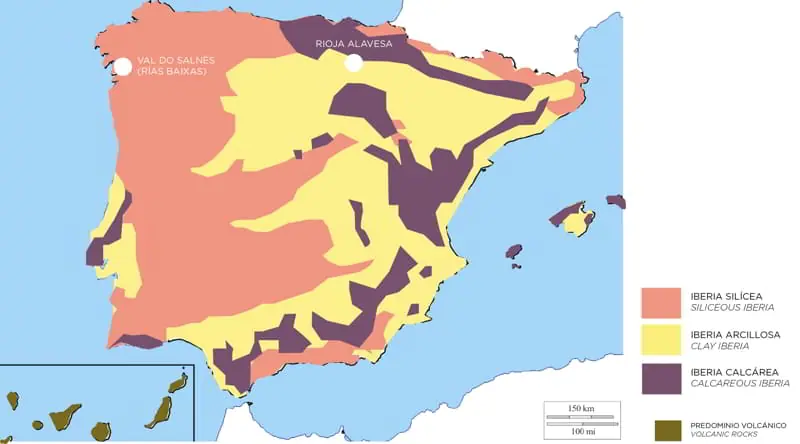
Lithology and the vineyards
All of this is crucial for the vineyard. The rocky substrate generates certain types of soils and, as it os known, soils constitute a fundamental element of the terroir.
Our two main production areas, Rioja and Rías Baixas, are respectively in Clay Iberia and in Siliceous Iberia. Their different mineral profiles emerge on completely different surfaces.
In Rioja Alavesa, the soils are made clay (the type with the finest texture) and its substrate is calcareous, generated by the erosion of the limestone mountain range that closes the region to the north: the characteristic light-coloured rocks of the Toloño and Cantabria mountain ranges. In Rioja Alta, some soils are also clayey-calcareous, while others are clayey-ferrous, due to its iron component, which appear in reddish soils.
The native Riojan varieties, such as the red Tempranillo grape and the white Viura grape, show a total affinity with these clayey and calcareous soils, with a distinctive light brown hue, which drain well and at the same time are capable of retaining a supply of moisture in hot summers. .
What about Rías Baixas? Being located in the large peninsular siliceous region, the soils are mostly granitic. They are dark gray in color and have a sandy texture, that is, with a granulometry that is coarser than clay. In Galicia, the granite sands are usually called ?xabre?. They form very characteristic soils, from which the Albariño variety obtains high acidity and a saline and mineral profile.
These images compare both types of soils, based on the example of Elciego, Rioja Alavesa (left) and Val do Salnés, Rías Baixas (right):
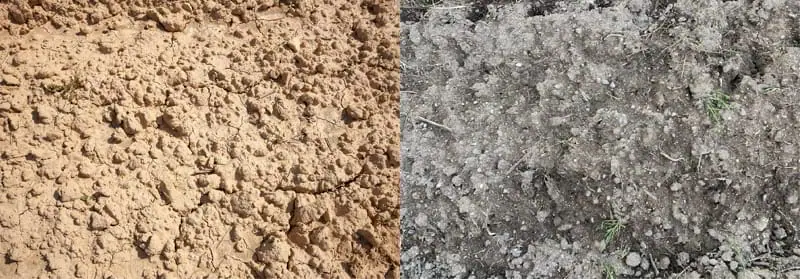
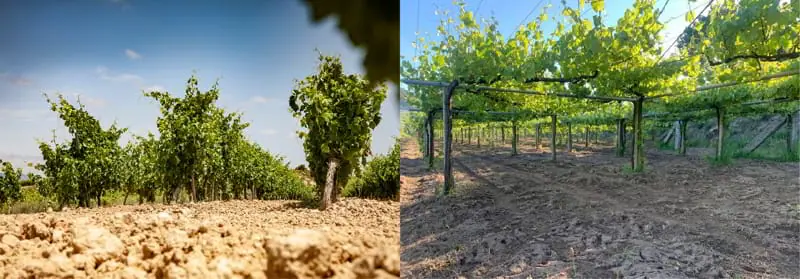 "
"
You may also be interested in:
